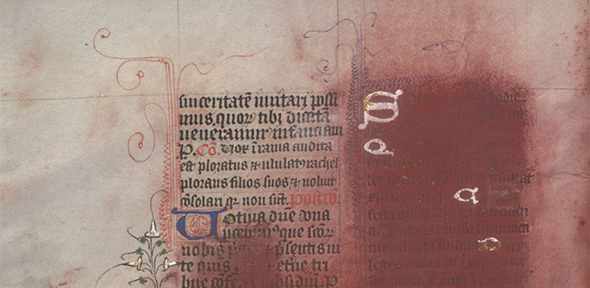
To mark the 501st birthday of the Reformation, the AHRC project ‘Remembering the Reformation’, in partnership with Cambridge University Library, Lambeth Palace Library and York Minister Library, draws renewed attention to the extensive and wide-ranging digital exhibition it launched to coincide with the anniversary last year.
31 October 2017 was the 500th anniversary of the event that is widely recognised as sparking off the Protestant Reformation: the nailing of Martin Luther’s 95 theses to the door of the Castle Church in the small university town of Wittenberg.
The digital exhibition brings together more than 130 treasures from the collections of the three libraries, as well as several other repositories, and allows viewers to zoom in to see these in glorious detail and high resolution.
Incorporating a dazzling array of books, manuscripts, images and artefacts, it offers a fascinating insight into how the Reformation both transformed the memorial culture of the medieval past and actively created a historical, literary and material legacy of its own for posterity. Defaced missals, heirloom bibles and illustrated martyrologies feature alongside a recycled crystal reliquary, an anti-Catholic clock, a replica dagger recalling the Popish Plot, Anthony Babington’s rosary beads and the finger bone of the bible translator, Miles Coverdale.
Alexandra Walsham, Professor of Modern History at the University of Cambridge, said: “501 years ago Luther’s protest against indulgences launched the Reformation. The rare and fragmentary examples that are part of this major digital exhibition explore how it has been remembered and forgotten through the centuries.”
Individually and collectively, these items illuminate how the Reformation in Britain and Europe has also been contested and reinvented over the centuries. They open a window onto a world that Protestantism deliberately sought to cast into oblivion and reveal how this movement simultaneously set out to write its own history for future generations.
Professor Walsham added: “2018 was a year of commemoration and celebration – an exhausting round of lectures, conferences, symposia, services, exhibitions, theatrical re-enactments, concerts, and book launches from which scholars who work on the religious revolution of the sixteenth century are still recovering!”
Image: Sarum Missal (15th century), CUL Add MS 6688, fo. 28v.
